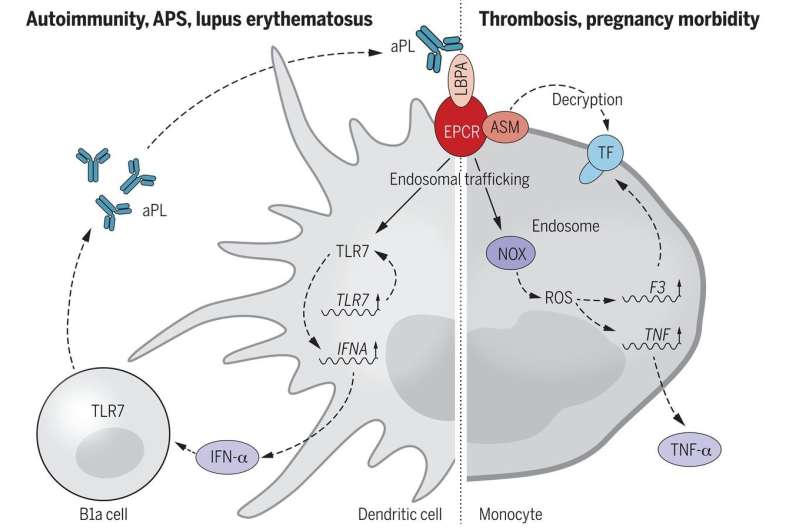Antiphospholipid syndrome breakthrough: Cell-surface targets identified, opening path to therapies

A team of researchers affiliated with multiple institutions in Germany and the U.S. have found a cell-surface target for autoantibodies targeting phospholipids (aPL) that contribute to antiphospholipid syndrome (APS). In their paper published in the journal Science, the group describes how they used mouse models of APS with aPL-induced fetal loss and thrombosis to study the connection between the factors that contribute to APS.
APS is an autoimmune disorder that puts patients at an increased risk for a variety of ailments ranging from thrombosis to obstetric complications. It tends to occur in patients experiencing autoimmunity conditions such as lupus. Prior research has led to the discovery of markers that can be used to identify APS in patients but it is still not known why the condition arises. One such marker is an increase in the presence of autoantibodies that target aPLs. Unfortunately, there is also a problem when identifying the underlying reason for an increase in such levels—other circumstances can also lead to them rising as well, such as infectious diseases. In this new effort, the researchers have focused on just the cases where raised levels have been associated with APS. In so doing, they have found a link between coagulation related to a lipid presentation in C receptor links, in APS mouse models.
Source: Read Full Article
